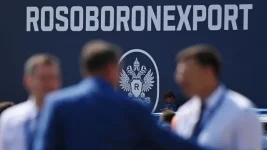- Views: 2K
- Replies: 17
Brazilian aerospace leader Embraer has presented a major proposal to establish a final assembly line for its C-390 Millennium transport aircraft in India.
However, this ambitious plan, which aligns with the 'Make in India' initiative, is conditional on a significant commitment from the Indian Air Force (IAF) to purchase between 40 and 80 aircraft.
This strategic offer comes as the IAF seeks a modern replacement for its ageing fleet of Antonov An-32 planes under its Medium Transport Aircraft (MTA) program.
A large order would not only modernise India's airlift capabilities but also transform the nation into a regional manufacturing and export hub for the advanced transport aircraft.
Raul Villaron, Head of Asia-Pacific for Embraer Commercial Aviation, confirmed that the viability of setting up a production facility in India hinges on the order size.
"The expectation is to have a deal for 40 to 80 aircraft, which is a lot for that size of aircraft," he stated, emphasising that such a volume would justify the investment and allow India to supply other nations in the region like Indonesia, Vietnam, and the Philippines.
To facilitate this project, Embraer signed a Memorandum of Understanding (MoU) with Mahindra Defence Systems in February 2024. This partnership aims to build a local supply chain for crucial components and systems, promoting self-reliance in India’s aerospace and defence sector.
The proposal follows the successful model of the Tata-Airbus partnership, which is producing C-295 aircraft in Vadodara.
The Embraer C-390 Millennium
The C-390 is a next-generation, twin-engine jet-powered aircraft designed for a wide range of missions. Its key features include:- Payload Capacity: 26 tonnes, capable of carrying armoured personnel carriers, helicopters, or up to 80 fully-equipped soldiers.
- Speed and Range: A high cruising speed of 870 km/h (Mach 0.8) and a range of 2,820 km with a 23-tonne payload.
- Versatility: The aircraft can be configured for medical evacuation, search and rescue, aerial refuelling, and airdropping cargo and paratroopers.
It has proven its reliability in critical operations, including delivering aid after the 2020 Beirut port explosion and transporting medical supplies during the COVID-19 pandemic in Brazil.
A Competitive Field
Embraer faces stiff competition for the IAF contract. Other contenders include Lockheed Martin’s C-130J Super Hercules and the Airbus A400M Atlas.The C-130J is a well-regarded turboprop aircraft, and the IAF already operates a fleet of 12. Lockheed Martin has also proposed establishing a local production line with an Indian partner.
The Airbus A400M offers a larger payload capacity of 37 tonnes but is considered a more expensive option that may exceed the IAF's budget.
According to some IAF sources, the C-390 is a strong frontrunner due to its versatility and lower life-cycle costs. India already has positive technical experience with Embraer platforms, using its ERJ-145 jets for the Netra airborne early warning system and Legacy 600 aircraft for VIP transport.
The IAF's decision on the MTA tender is anticipated by 2026-2027. If the order is placed with Embraer, India would become the largest operator of the C-390 aircraft in the world, bolstering both its military and industrial capabilities.


